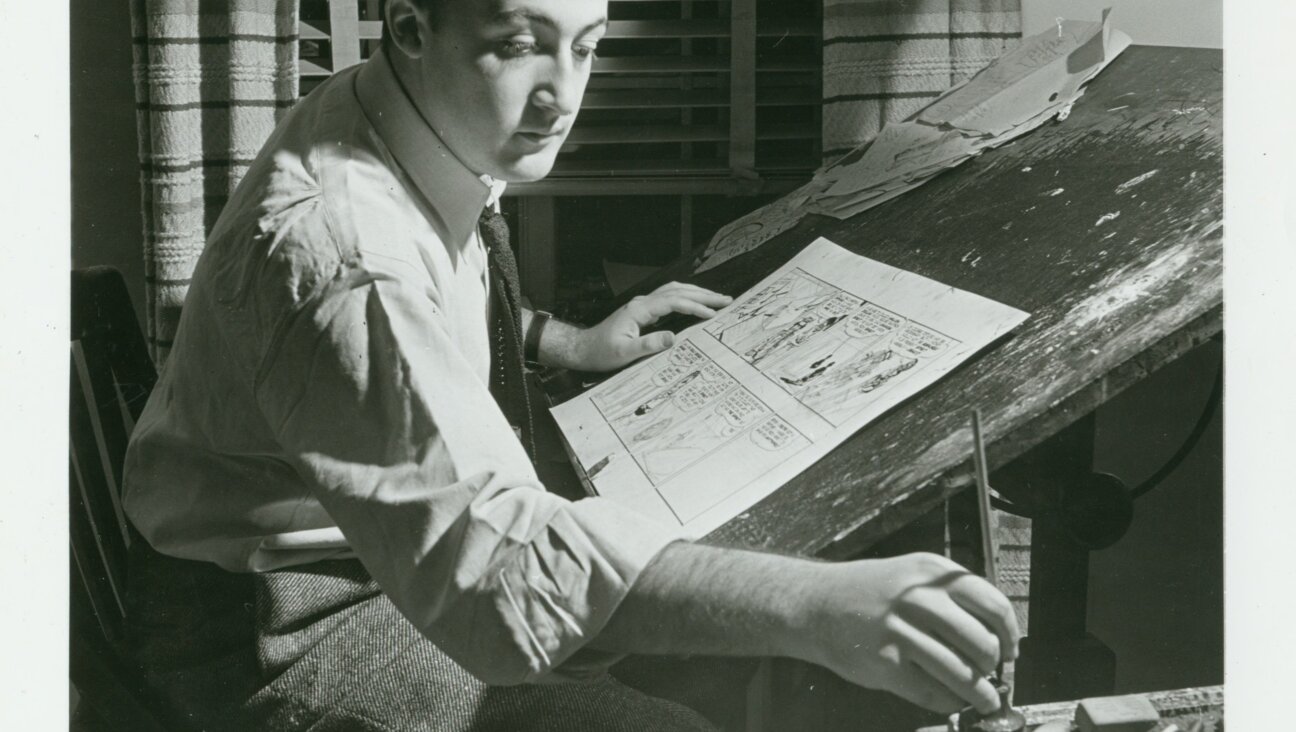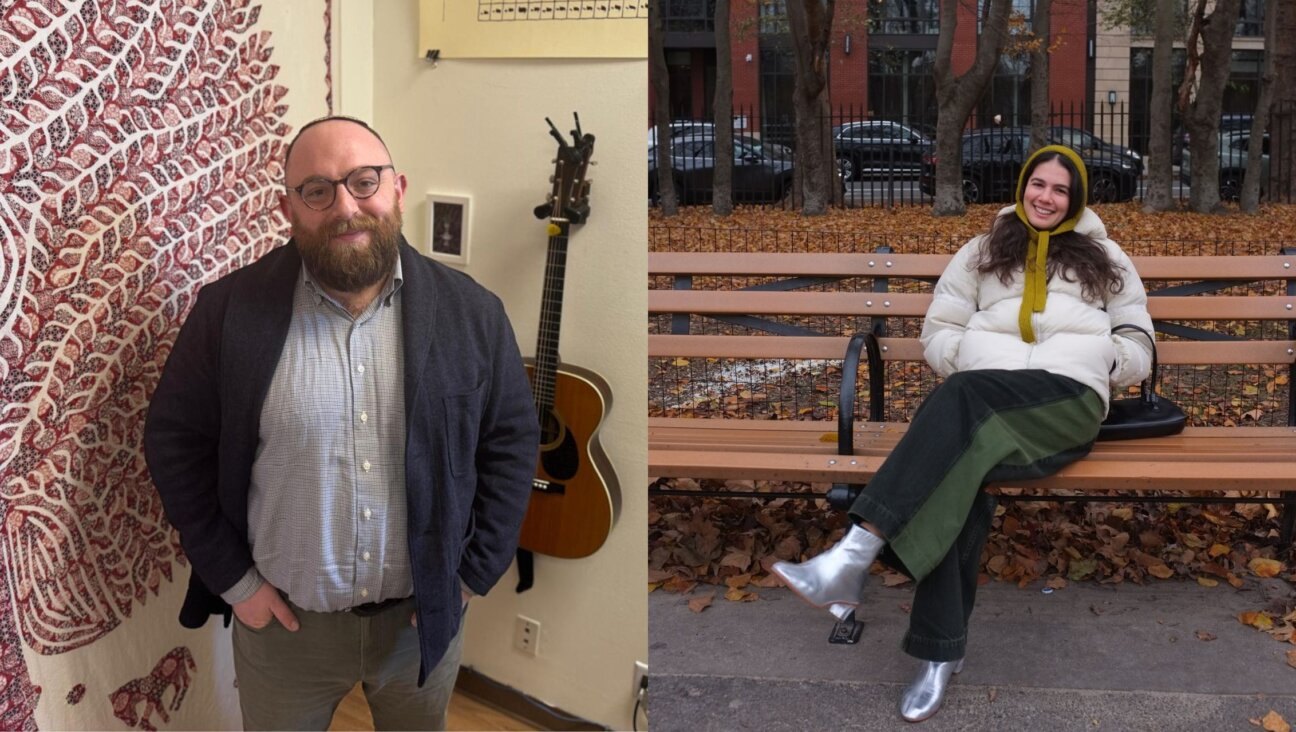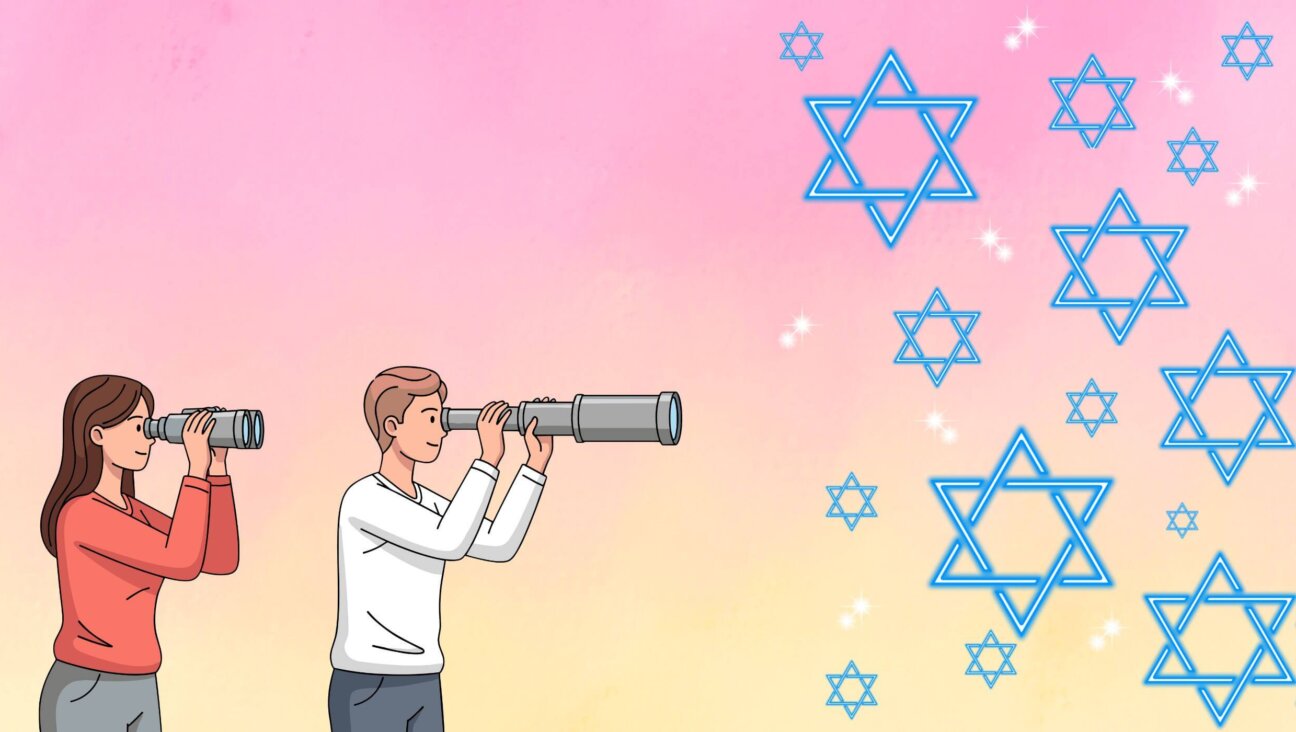Mazel tov: First edition of Yiddish ‘Harry Potter’ sells out in less than 48 hours

Graphic by Angelie Zaslavsky
Less than 48 hours after the Yiddish edition of “Harry Potter and the Sorcerer’s Stone,” translated by Arun Viswanath, became available for pre-order, the book sold out its first print run of 1,000 copies. (Viswanath is Forverts editor Rukhl Schaechter’s nephew.)
For a Yiddish publisher in 2020, that’s a sales number that’s almost magical.
A second edition is in the works, publisher Niklas Olniansky announced on Facebook.
“It’s crazy, it’s hard to believe,” said Olniansky, who is based in Sweden. “We thought that we wouldn’t be able to sell more than 1,000 copies of a non-Hasidic book.” Olniansky noted that so far copies have been ordered in the United States, Israel, Poland, Sweden, Morocco, Australia and China.
Few — if any — new Yiddish books published outside of the Hasidic world sell 1,000 copies in a year, let alone in 48 hours. Most new Yiddish books for adults are either self-published by their authors or released by one of two Israeli Yiddish publishers in modest editions of several dozen to several hundred. Authors organize their own publicity and sell their books largely by word of mouth among a small community of readers. Although some contemporary Yiddish fiction receives stellar reviews and literary awards, the small audience means that the industry goal, financially speaking, is breaking even, not making a living.
Olniansky typically prints about 500 copies of his books, which range from simple board books that teach vocabulary to bilingual Swedish and Yiddish storybooks to novels for older children. His publishing house, Olniansky Tekst, receives support from the Swedish government; in Sweden, Yiddish is an official minority language.
Within the Hasidic world, sales figures are higher but still modest by publishing industry standards. (Many books published for the American Hasidic market in Yiddish are simultaneously published in English and Hebrew for other Orthodox communities in New York and Israel, which helps to offset the cost.)
So how did the Yiddish edition of “Harry Potter and the Sorcerer’s Stone” manage to sell 1,000 copies in 48 hours? The popularity of “Harry Potter” is a key factor: Between the books, which have sold more than 500 million copies worldwide, the ongoing movie franchise and associated merchandise and theme parks, J.K. Rowling’s wizarding world is one of the most successful entertainment franchises in history. And translations of the books have become a popular learning tool for language students. Unsurprisingly, some of the people on social media who said they had purchased a copy are current or former Yiddish-language students. But native Yiddish speakers also appear, based on social media posts, to be a key group among those who purchased copies. And collectors who buy new translations of beloved books even if they can’t read them, a couple of whom have mentioned their purchase of the book on Twitter, are a third audience.
“I’m an optimist by nature but even I’ve been blown away by the enthusiasm. I’m thrilled,” said Arun Viswanath, the book’s translator, noting that he’s seen enthusiastic responses not only from Yiddish speakers and Jews more generally but among the wider community of language enthusiasts and people active in the Harry Potter fandom. “I hope people will be just as happy with the book as they were with the news of its release.”
While “Harry Potter and the Sorcerer’s Stone” in Yiddish has been an unusually big hit, it is only the latest in a long line of children’s books to be translated into the language of Sholem Aleichem. Prior to World War II, many major works of American and European children’s literature appeared in Yiddish translation. Among those you can read for free in the Yiddish Book Center’s online library are Mark Twain’s “The Prince and the Pauper,” Jonathan Swift’s “Gulliver’s Travels,” Rudyard Kipling’s “Rikki-Tikki-Tavi,” Charles Dicken’s “Oliver Twist” and Hans Christian Andersen’s “The Emperor’s New Clothes.”
In recent decades, new Yiddish translations of classic children’s literature have included Antoine de Saint-Exupéry’s “The Little Prince,” several works by Dr. Suess including “The Cat in the Hat,” H. A. Rey’s “Curious George” and A. A. Milne’s “Winnie-the-Pooh.”
















